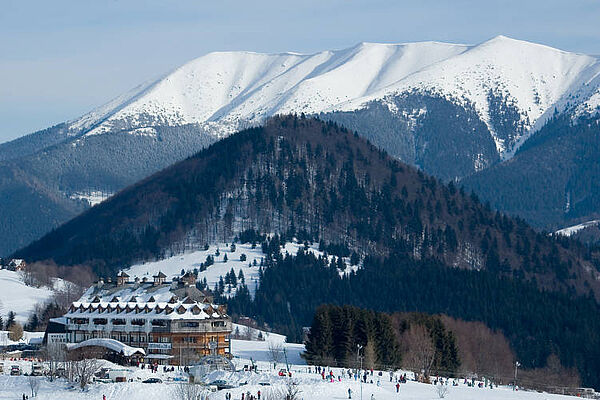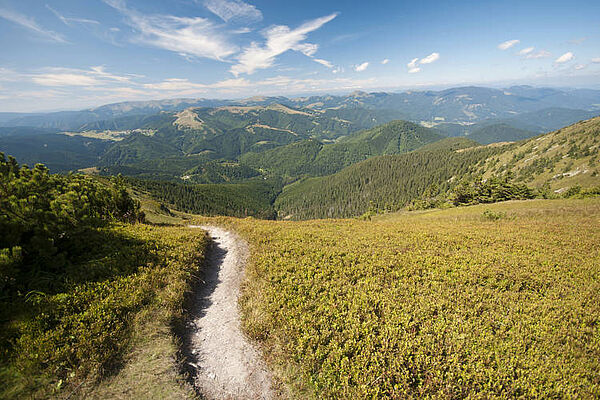City of Banská Bystrica
This medieval mining town is located in central Slovakia, just over 200 km northeast of the capital city of Bratislava and west of Košice, the second biggest city in the country. With over 81,000 inhabitants and an area of 103.37 square km, Banská Bystrica is the largest city and also the administrative headquarters of the district of the same name and the fifth largest city in Slovakia. The town lies in a valley on the River Horn at 362 meters in altitude and is surrounded by several mountain ranges: mainly by the Great Fatra and Low Tatra mountains in the north, the Slovak Ore mountains and the Polana in the southeast and the Kremnitz mountains in the west.
What’s happening in Banská Bystrica?
Banská Bystrica is the most important historical, cultural and economic center of Central Slovakia. The most famous attractions are located in the historic district in and around the square of the Slovak National Uprising. Dominating the square is the clock tower, also called the “Leaning Tower” due to its 8-cm inclination; from the top of the tower you get a wonderful panorama view of the city and the surrounding mountains. The former Jesuit church of St. Francis Xavier became the Cathedral of the Diocese of Banská Bystrica at the end of the 18th century. Also found in the square is the Marian Column, a plague statue dating from the 18th century, a stone Art Nouveau fountain from the early 20th century and a black obelisk that was erected in honor of the Soviet soldiers who fell in 1945. In memory of the Slovak National Uprising, there is a museum with the same name that has a collection of military tanks, artillery, aircraft, etc., from the Second World War.
Many buildings around the square and the surrounding streets are town houses in Gothic, Renaissance or Baroque style, such as the Thurzo House, which accommodates the historical collection of the Museum of Central Slovakia. The city castle and the castle grounds on the edge of the square consist of the Gothic Assumption Church, the Matthias House, where an exhibition on the history of the city and Treasury are shown, the old town hall, in which the Štátna galéria (State Gallery) presents contemporary art, a vicarage and a fortification. Other museums in Banská Bystrica include Tihányi-Kastell in the district of Radvaň, which houses the scientific collection of the Museum of Central Slovakia, the Literárne a Hudobné múzeum (Museum of Literature and Music) and the Poštové múzeum (Postal Museum), the country’s only postal museum.
Summer
The Radvaň fair is one of the most important annual fairs in Slovakia. In addition to the traditional pilgrim attractions here, a large number of visitors can see traditions, handicrafts and customs, along with restaurants, concerts and much more. In summer, the Aqualand beach on the city lake offers a swimming and children’s pool, water slides, beach volleyball, mini golf, table tennis, as well as paddle boating and water-cycling on the lake.
Numerous opportunities for leisure and sporting activities are also found in the hilly and mountainous landscapes around Banská Bystrica: hiking, mountain biking, horseback riding, boat trips on the River Horn, paragliding, visits to the Harmanec stalactite cave, the Vartovka observatory, the mining trail in Špania Dolina and more.
Winter
In winter in the mountains around Banská Bystrica there are perfect opportunities for winter sports: skiing and snowboarding in one of the large ski areas such as Park Snow Donovaly and smaller ski centers in the vicinity of the city and cross-country skiing in the Kremnitz mountains in the Skalka cross-country ski center. You can find rest and relaxation only a few kilometers outside the city at the spa resorts of Sliač, Kováčová and Brusno with their healing mineral springs or in hotel wellness centers.





